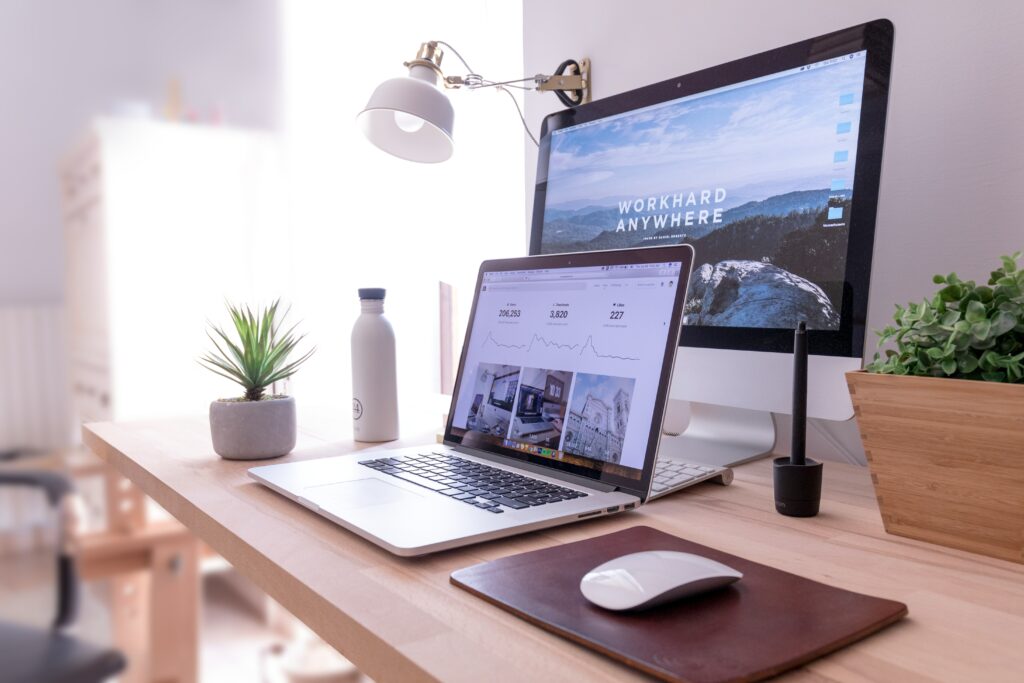If you’re looking to give your WordPress eCommerce store a personalized and professional touch, you’ve come to the right place. In this blog post, we’ll explore expert CSS customization tips that will help you boost the visual appeal and functionality of your online store. Whether you’re a beginner or an experienced WordPress user, these tips will provide valuable insights to take your eCommerce store to the next level. So, let’s dive into the world of CSS customization tips and elevate your online business!
Enhancing Product Display
One effective way to enhance your WordPress eCommerce store is to utilize CSS for creating a responsive and visually appealing product grid layout. This can help in optimizing the display of your products across different devices. Additionally, employing hover effects can showcase product details when users interact with the display, adding a layer of interactivity. Another expert tip is to utilize custom fonts and typography to add personality and branding to the product display, making your store stand out. Furthermore, incorporating animations can create engaging transitions for product images, capturing the attention of potential customers.
Optimizing Product Grid Layouts
To ensure a seamless display of your eCommerce store across various devices, implementing media queries in CSS is crucial. This will enable the product grid layout to adapt responsively, providing a consistent and visually appealing experience for users. Utilizing flexbox or grid layout can further enhance the organization and balance of your product display, creating an aesthetically pleasing storefront. It’s also essential to optimize image sizes and spacing within the grid layout to maintain visual harmony. Additionally, considering lazy loading techniques for images can significantly improve page loading speed, contributing to an overall enhanced user experience.
Customizing Product Image Sizes
One effective way to enhance your WordPress eCommerce store is by using CSS to establish specific dimensions for product images, ensuring a consistent and aligned display. Experimenting with various image cropping techniques can highlight the key features of your products, drawing attention from potential customers. Additionally, by employing CSS filters such as brightness and contrast adjustments, you can elevate the visual appeal of your product images, making them more captivating. Implementing responsive image techniques is also crucial to ensure optimal viewing across different devices without compromising on image quality, providing a seamless and visually appealing experience for your website visitors.
Improving User Experience
One effective strategy to boost your WordPress eCommerce store is to enhance the checkout process by customizing the page to reflect your brand’s identity and improve user engagement. Additionally, optimizing the add to cart buttons with CSS styling can make them more visually appealing, ultimately encouraging higher conversion rates. Implementing responsive design techniques is also crucial to ensure a seamless shopping experience across all devices, ultimately boosting customer satisfaction. Furthermore, utilizing white space and typography adjustments can create a clean and visually pleasing interface, ultimately enhancing the overall user experience.
Customizing Checkout Page
Customizing the color scheme and layout of the checkout page is essential to align it with your brand’s visual identity, ensuring a seamless and cohesive shopping journey for customers. By incorporating progress indicators and clear call-to-action buttons, you can effectively guide users through the checkout process, ultimately reducing cart abandonment rates. Additionally, integrating custom fields for the gathering of additional information during checkout allows for a personalized experience for shoppers without overwhelming them. Applying CSS customization tips to streamline the checkout form further enhances the process, making it intuitive and efficient for users to complete their purchases. These expert tips can significantly elevate the overall user experience and boost conversion rates for your WordPress eCommerce store.
Styling Add to Cart Buttons
Experimenting with various button shapes, sizes, and colors using CSS can be a game-changer for your eCommerce store. By finding the optimal combination that attracts attention and drives clicks, you can significantly enhance user interaction. Additionally, incorporating subtle hover effects or animations to the “add to cart” buttons adds an interactive touch that captures users’ interest, ultimately encouraging them to engage with your products. Maintaining consistency in button styling throughout the website creates a sense of familiarity for users, contributing to a seamless browsing experience. Moreover, utilizing contrasting colors or strategic placement can make “add to cart” buttons stand out prominently, ultimately leading to increased conversions and sales.
Enhancing Mobile Responsiveness
To enhance the mobile user experience of your WordPress eCommerce store, it’s crucial to implement CSS media queries, ensuring that the layout and design seamlessly adapt to mobile devices. By appropriately sizing and formatting text and images, you can further optimize the mobile experience, providing users with a visually pleasing storefront. Additionally, responsive design techniques will contribute to improved loading speed, ultimately enhancing the overall mobile browsing experience. Testing the mobile responsiveness across different devices and screen sizes is vital to maintain consistent quality and ensure a seamless shopping journey for all users.
CSS Customization Tips for Mobile Devices
Implementing fluid grids and flexible images using CSS media queries is essential to ensure that your website adapts seamlessly to different mobile device resolutions. By incorporating breakpoints in your CSS code, you can define specific styles for various screen widths, facilitating a smooth transition between different device sizes. Utilizing the ‘max-width’ property in media queries is also crucial to prevent content from overflowing on smaller screens, ultimately maintaining a clean and organized appearance. Additionally, experimenting with orientation-based media queries allows you to customize the layout based on whether the user is viewing the site in portrait or landscape mode, enhancing the overall mobile browsing experience.
Optimizing CSS for Different Screen Sizes
In order to enhance the performance and responsiveness of your WordPress eCommerce store on various devices, it’s essential to optimize the website’s elements for smaller screens. By minimizing unnecessary elements and reducing image sizes, you can significantly improve loading times and overall performance. Additionally, employing relative units like percentages and em’s instead of fixed pixel values allows for more fluid adaptation to diverse screen sizes, ensuring a seamless user experience. Embracing CSS flexbox or grid layout techniques enables the creation of dynamic arrangements of content that gracefully adjust across varying viewport dimensions. Furthermore, considering the use of feature queries in CSS can help detect browser support for specific styling features, ultimately ensuring compatibility with a wide range of devices, thus optimizing the overall user experience and performance of your eCommerce store.
Personalizing Typography
Customizing font styles can significantly enhance the visual appeal of your WordPress eCommerce store while maintaining a consistent brand personality. Experimenting with different font weights and sizes allows you to emphasize essential elements such as product names and calls to action, creating a visually engaging design. Utilizing custom Google Fonts or Adobe Typekit can add unique typography options, giving your store a distinctive edge not readily available in default WordPress themes. Furthermore, implementing responsive typography techniques ensures optimal readability across various devices, ultimately enhancing the user experience for potential customers.
Customizing Font Styles
When enhancing the typography of your WordPress eCommerce store, it’s essential to select harmonious font pairings for your headings and body text. This not only establishes a visual hierarchy but also enhances readability, creating a polished and professional typographic layout. Opting for web-safe fonts is crucial to ensure consistent display across different browsers, preventing any unintended font substitutions that could compromise your store’s branding. Furthermore, fine-tuning letter spacing, line height, and paragraph indentation contributes to a refined typographic presentation. Additionally, considering the use of icon fonts for scalable vector graphics enables the seamless adaptation of crisp icons to varying screen sizes, ensuring optimal quality and visual appeal across devices.
Adjusting Heading and Paragraph Text Sizes
To enhance the visual hierarchy and ensure that essential titles stand out, adjust heading sizes based on content importance while maintaining harmony with the overall page layout. Using relative units like em or rem for text sizing promotes a consistent visual appeal and facilitates scalability according to user preferences or device specifications. Additionally, employing media queries in CSS to set specific text sizes for different viewport dimensions optimizes the reading experience across various devices, including desktops, tablets, and smartphones. It’s also essential to test different paragraph text sizes to find the ideal balance between readability and content density, catering to diverse audience preferences without sacrificing style.
Creating Unique Branding
To enhance your WordPress eCommerce store, consider customizing the colors to resonate with your brand identity, fostering a unique visual experience for customers. Incorporating custom fonts and typography that align with your brand’s personality sets your store apart from the competition, creating a distinct and memorable impression. Additionally, crafting a unique logo and favicon contributes to strong brand recognition, leaving a lasting impact on visitors. Implementing unique design elements such as customized icons, buttons, and graphics further elevates the overall look and feel of your eCommerce site, enhancing its visual appeal and user experience.
Customizing Colors to Match Brand Identity
To seamlessly integrate your brand’s specific color palette throughout your WordPress eCommerce store, utilize CSS customization tips to ensure a cohesive visual identity from the header to the footer. Customizing the color scheme of interactive elements such as buttons and links is essential to maintain consistency and harmonize with your brand’s overall aesthetic. Additionally, incorporating subtle color accents that complement your products or services can enhance the overall shopping experience, creating a more visually engaging environment for your customers. Experimenting with different color combinations allows you to find the perfect balance between aesthetics and readability, ultimately optimizing the impact of your branding efforts.


